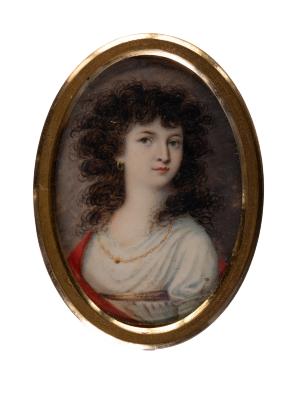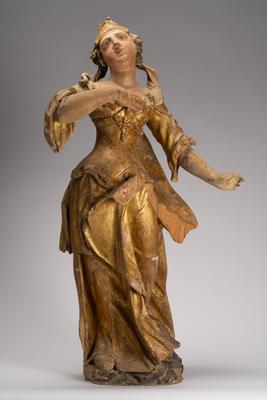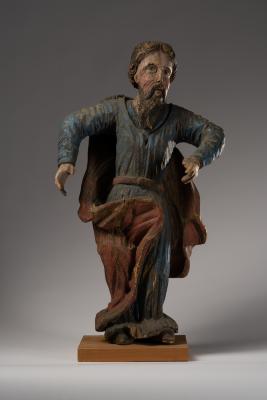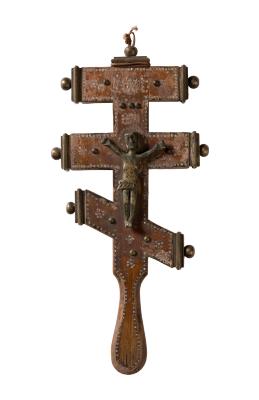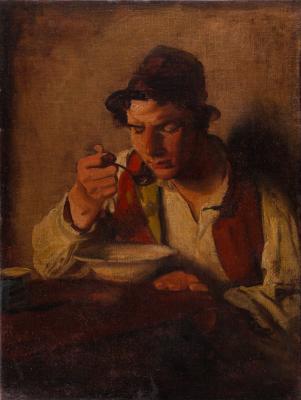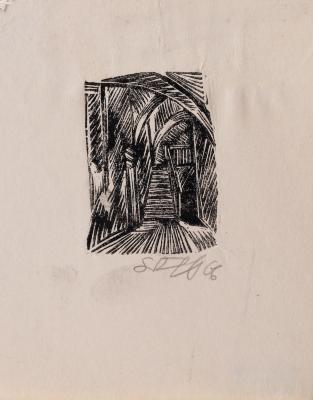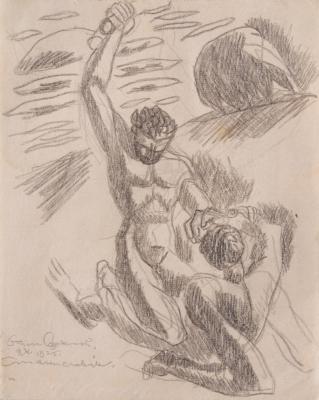The simplicity of the lines and the rigour of the composition are characteristic of genre portraits and graphic works by Boichuk made in the Lviv period. The search for compositional regularities became an extremely important and fundamentally new quality of the artist's drawing. Such a drawing is generalized to the level of a sign, where the categories of space and time become abstract. The line became the most appropriate means of expression in relation to the task. Its rhythmic repetitions do not create a sense of motion, but due to the verification of the image, they establish a form that acquires weight and completeness. In 1973, this unique exhibit item got into the collection of Lviv National Art Gallery from the private collection of Yaroslava Muzyka, who closely worked with Boichuk and his followers during the Lviv period of the artist's life. Yaroslava Muzyka lived in a house on Charnetskyi Street (now Vynnychenko Street, 26), where Boichuk's studio was located; she managed to preserve a significant amount of archival material and some works that remained after the artist’s moving to Kyiv.











